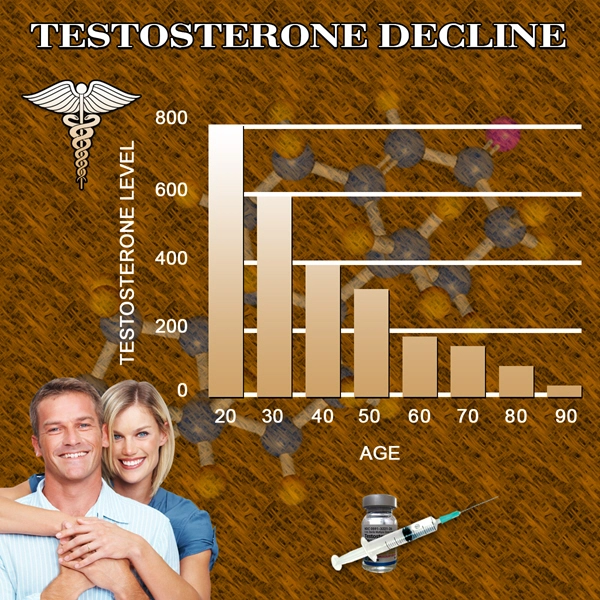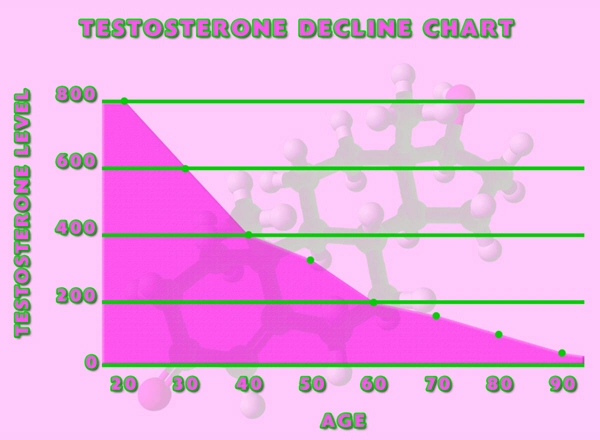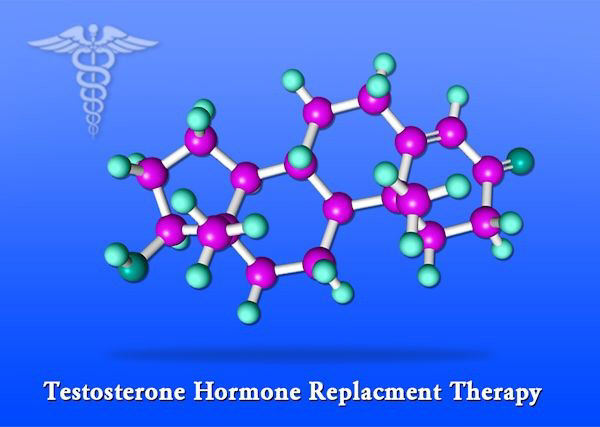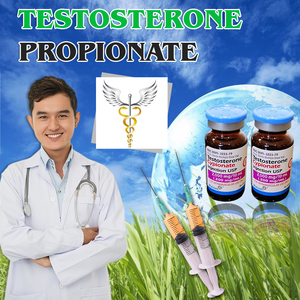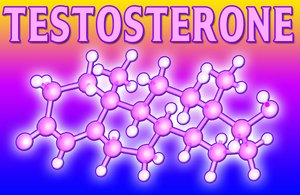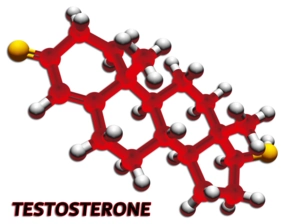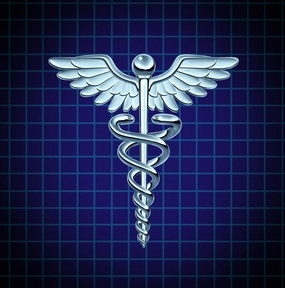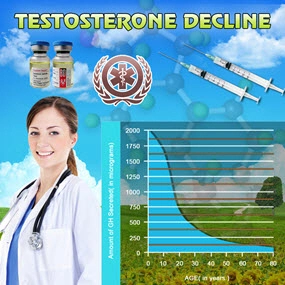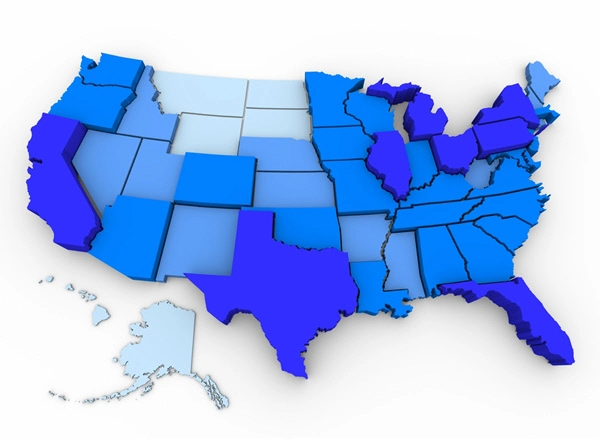Video Link: https://vimeo.com/293537947
Video Download: Click Here To Download Video
Video Stream: Click Here To Stream Video
Testosterone Replacement Therapy is a highly effective hormone treatment designed to restore Testosterone Levels in patients suffering from Low-T and Andropause. One issue with Testosterone Treatments as they exist today is that each form of therapy has its own distinct drawbacks. Typical types of treatment involve Testosterone Patches, Testosterone Gels, Testosterone Implants, and Testosterone Injections.
Low-T Patch Drawbacks – Transdermal Patches have to adhere to the skin 22-24 hours per day. Some people don't like the appearance of these patches, and a small portion of patients develop irritation as a result of the patches. These patches also have issues when submerged in water.
Low-T Gel Drawbacks – Gel and Cream Testosterone come with the risk of 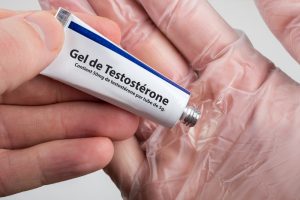 transference if someone makes physical contact with the area where the treatment is administered, in the hours following application. These treatments also wash off when exposed to water in the first few hours, reducing the effectiveness of treatment in that case.
transference if someone makes physical contact with the area where the treatment is administered, in the hours following application. These treatments also wash off when exposed to water in the first few hours, reducing the effectiveness of treatment in that case.
Low-T Implant Drawbacks – Testosterone Pellets provide a 3-5 month dose of Testosterone, but must be surgically implanted in an outpatient procedure. Furthermore, there is a small risk of infection and a slightly more significant risk that the pellets will dislodge from the implantation site.
Low-T Injection Drawbacks – Testosterone Injections provide a Testosterone Dose, which lasts from three days to three weeks. But many people have issues with needle anxiety, and Injectable Testosterone takes the most specialized care to administer.
Because of these drawbacks, and the millions of patients nationwide and worldwide that can benefit from Low-T Therapy, pharmaceutical companies are coming up with new and inventive ways to administer Bio-Identical Testosterone.  One of the latest of these is Natesto, which is a Low-T treatment designed to be delivered to the inside of the nostril. The skin inside the nose is thin and readily absorbs the medication, and the area is incredibly resistant to transference. The idea behind applying the drug to the nostril is similar to medications like Axiron, which are designed to be delivered to the armpit—by providing medicine to an area which is difficult to make contact with by accident, it reduces the risk of transference.
One of the latest of these is Natesto, which is a Low-T treatment designed to be delivered to the inside of the nostril. The skin inside the nose is thin and readily absorbs the medication, and the area is incredibly resistant to transference. The idea behind applying the drug to the nostril is similar to medications like Axiron, which are designed to be delivered to the armpit—by providing medicine to an area which is difficult to make contact with by accident, it reduces the risk of transference.
As of December 2014, Natesto is owned by Endo Pharmaceuticals and was developed by Trimel Pharmaceuticals. The rights to Natesto were sold by Trimel for a total of twenty-five million dollars, with potential future revenues. Natesto has been under FDA Testing and finally met FDA approval in May of the same year. The product should be available to patients for prescription in the spring of 2015.
What is Natesto Used For?
Natesto is intended for the treatment of Testosterone Deficiency, Andropause, and Low-T. Patients with abnormally low Testosterone Levels can use Natesto to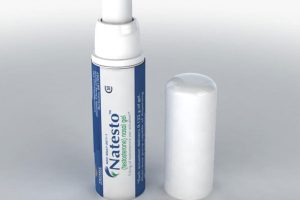 Boost Testosterone Levels to normal levels associated with health and vitality. The treatment can be used for both Primary and Secondary Testosterone Deficiency.
Boost Testosterone Levels to normal levels associated with health and vitality. The treatment can be used for both Primary and Secondary Testosterone Deficiency.
Who Should Not Use Natesto?
Natesto is not intended for women with Low-T, because Natesto is concentrated at a dose much higher than women need. Natesto may be available in the future for the treatment of Pediatric Testosterone Deficiency. But there has not been sufficient clinical study conducted on Natesto for it to be approved for use by boys with Testosterone Deficiency.
How Does Natesto Work?
Natesto is intended to be applied inside the nostrils three times daily. The Low-T Treatment is delivered in a canister with a pump-action. Each time the pump is pressed, it produces half of the necessary dose. It takes two pumps to deliver an entire dose of Natesto Testosterone, a pump for each nostril. Each pump provides 5.5 milligrams of Bio-Identical Hormone Treatment, and each tri-daily dose provides 11 milligrams of treatment, meaning that the patient receives 33 milligrams of Testosterone each day.
What Men Should Avoid Natesto Low-T Nasal Therapy?
Men that have prostate cancer should avoid Testosterone Therapy because there is evidence that Testosterone Treatments exacerbate existing tumors. Patients with breast cancer should also avoid taking Natesto Andropause Treatment because it can potentially worsen breast cancer through its conversion into Estrogen.
Side Effects That May Occur as a Result of Natesto Treatment
- Low-T Therapy can lead to or exacerbate sleep apnea in at-risk patients.
- Patients with liver, kidney, or heart disease may experience edema.
- If Natesto is used externally, it can potentially lead to a wholly suppressed sperm count.
- There is some evidence that suggests that patients using Low-T products such as Natesto may be at an increased risk of Deep Vein Thrombosis or Venous Thromboembolism.
- Testosterone Treatments can increase PSA Counts, but there is no evidence that this has any adverse health effects. Because of this symptom, be sure to be evaluated for Prostate Cancer before starting treatment.
Common Reactions to Natesto
The following are symptoms that were experienced while Natesto was being evaluated by the FDA, all of which occurred in more than three percent of patients:
- Nasal Scabbing
- Sinus Infection
- Upper Respiratory Tract Infection
- Nasopharyngitis
- Discomfort in Natesto Application
- Nosebleed
- Stuffy nose
- A headache
- Increased PSA Count
Who Should I Talk to if I am Interested in Testosterone Therapy?
Natesto will be available to patients shortly, but there are lots of excellent Low-T Treatments available to you today. We listed the drawbacks of various forms of Testosterone Treatment at the start of the article, but none of these drawbacks are so dominant that they should lead you not to consider treatment if you can benefit.
Testosterone HRT is a fantastic option for patients looking to restore their Testosterone Production to a healthy level, and want to improve their health and quality of life in the face of Andropause and Low-T.
If you are interested in Low-T Treatment, or any other form of Hormone  Treatment, we encourage you to contact our clinic.
Treatment, we encourage you to contact our clinic.
We have specialists standing by that can discuss HRT Options with you and help you decide if you'd like to set up an appointment with a physician in your area that can get you started.
If diagnostic testing shows that you can benefit from Hormone Replacement Therapy, we can deliver HRT Products directly to your address so you can begin treatment as soon as possible!
Contact Us Today For A Free Consultation

- Andropause Symptoms Treatment - Fixing Male Menopause - Video [Last Updated On: November 25th, 2024] [Originally Added On: July 12th, 2012]
- Andropause: Male Menopause - Video [Last Updated On: November 25th, 2024] [Originally Added On: July 12th, 2012]
- About Andropause - Video [Last Updated On: November 25th, 2024] [Originally Added On: July 12th, 2012]
- MALE MENOPAUSE, MANOPAUSE, OR ANDROPAUSE? - Video [Last Updated On: November 25th, 2024] [Originally Added On: July 12th, 2012]
- Andropause Menopause Symptoms and Solutions Testosterone - Video [Last Updated On: November 25th, 2024] [Originally Added On: July 12th, 2012]
- Treatments for Male Menopause/Andropause/Manopause/Testosterone Deficiency - Video [Last Updated On: December 20th, 2024] [Originally Added On: July 12th, 2012]
- What is testosterone deficiency syndrome/male menopause/.andropause - Video [Last Updated On: November 25th, 2024] [Originally Added On: July 12th, 2012]
- Testosterone Deficiency Syndrome/Andropause - Video [Last Updated On: December 20th, 2024] [Originally Added On: July 12th, 2012]
- John Crisler DO - Andropause [Last Updated On: December 20th, 2024] [Originally Added On: July 12th, 2012]
- Menopause/Andropause [Last Updated On: December 20th, 2024] [Originally Added On: July 12th, 2012]
- Male Andropause: Part 2 - Video [Last Updated On: December 20th, 2024] [Originally Added On: July 12th, 2012]
- Dr. Steven Jepson discusses Andropause - Video [Last Updated On: December 20th, 2024] [Originally Added On: July 12th, 2012]
- Maturitas publishes clinical guide on low-dose vaginal estrogens for vaginal atrophy [Last Updated On: January 10th, 2018] [Originally Added On: September 13th, 2012]
- Testosterone Deficiency in Men - Andropause Symptoms and Treatment - Video [Last Updated On: January 4th, 2025] [Originally Added On: November 2nd, 2012]
- Andropause - The Male Menopause - Video [Last Updated On: January 3rd, 2025] [Originally Added On: November 2nd, 2012]
- SA STGEC ~ Ad Hoc Talk: Andropause (2006) - Video [Last Updated On: January 4th, 2025] [Originally Added On: November 2nd, 2012]
- The Cosmetic Medic Stamford CT - Video [Last Updated On: January 5th, 2025] [Originally Added On: November 2nd, 2012]
- Testosterone Roundtable -- Overview of Low Testosterone (Part 1) - Video [Last Updated On: January 5th, 2025] [Originally Added On: November 2nd, 2012]
- Naturally Increase Testosterone Levels - Video [Last Updated On: February 8th, 2025] [Originally Added On: November 26th, 2012]
- Patients Medical Welcomes Dr. Marcia A. Harris, Holistic Gynecologist and Anti-Aging Physician [Last Updated On: June 7th, 2025] [Originally Added On: December 2nd, 2012]
- ALCAT Pioneer, Roger Deutsch, to Address "Food Induced Inflammation and Aging" at Vienna's Prestigious December ... [Last Updated On: June 8th, 2025] [Originally Added On: December 5th, 2012]
- Andropause: Changes in Aging Men - Video [Last Updated On: February 19th, 2025] [Originally Added On: December 10th, 2012]
- Rhein Test Kit - Avante Medical Center - Video [Last Updated On: February 19th, 2025] [Originally Added On: December 10th, 2012]
- AM Northwest Appearance - Andropause - Video [Last Updated On: February 19th, 2025] [Originally Added On: December 10th, 2012]
- Lessons in Menopause for Men - Video [Last Updated On: December 15th, 2012] [Originally Added On: December 15th, 2012]
- AAG Health Publishes Testosterone and HGH Discussion-Blog [Last Updated On: June 11th, 2025] [Originally Added On: December 26th, 2012]
- Understanding Andropause: Erectile Dysfunction - Part Two - Video [Last Updated On: February 26th, 2013] [Originally Added On: February 26th, 2013]
- Airing March 2 and 3: BBC World News 30-Minute Segment on Andropause/Aging with Dr. Jeff Life, Healthy Aging Expert ... [Last Updated On: February 26th, 2025] [Originally Added On: February 28th, 2013]
- Andropause - Great Android App For Men - Vigor - Stamina - Video [Last Updated On: February 28th, 2013] [Originally Added On: February 28th, 2013]
- Eastday-Survey finds 1m locals suffer from andropause [Last Updated On: August 23rd, 2025] [Originally Added On: May 22nd, 2013]
- What Is Andropause?Diagnosis,Symptoms,Treatment [Last Updated On: March 11th, 2025] [Originally Added On: July 2nd, 2013]
- Andropause - Video [Last Updated On: July 2nd, 2013] [Originally Added On: July 2nd, 2013]
- Andropause Glossary - Video [Last Updated On: July 2nd, 2013] [Originally Added On: July 2nd, 2013]
- Andropause Symptoms - Video [Last Updated On: July 2nd, 2013] [Originally Added On: July 2nd, 2013]
- Understanding Andropause: Erectile Dysfunction - Part One - Video [Last Updated On: July 2nd, 2013] [Originally Added On: July 2nd, 2013]
- Understanding Andropause - Video [Last Updated On: July 2nd, 2013] [Originally Added On: July 2nd, 2013]
- Andropause video - Video [Last Updated On: July 8th, 2013] [Originally Added On: July 8th, 2013]
- ANDROPAUSE SOLUTION "OSS-TEST" TOP BEST NATURAL TESTOSTERONE BOOSTER - Video [Last Updated On: August 3rd, 2013] [Originally Added On: August 3rd, 2013]
- Natural relief for andropause [Last Updated On: December 2nd, 2017] [Originally Added On: October 10th, 2013]
- Andropause - Causes, Symptoms, Treatment, Diagnosis - Seniors ... [Last Updated On: January 7th, 2018] [Originally Added On: November 3rd, 2013]
- Andropause - Causes, Symptoms, Treatment, Diagnosis - Men's Health ... [Last Updated On: December 31st, 2017] [Originally Added On: November 3rd, 2013]
- Andropause Specialist [Last Updated On: January 21st, 2018] [Originally Added On: November 10th, 2013]
- Understanding Andropause [Last Updated On: October 24th, 2015] [Originally Added On: November 10th, 2013]
- Andropause - Causes, Symptoms, Treatment, Diagnosis - Men's ... [Last Updated On: January 20th, 2018] [Originally Added On: November 18th, 2013]
- Andropause | Male Menopause | Male Menopause Symptoms | Male ... [Last Updated On: November 25th, 2018] [Originally Added On: November 18th, 2013]
- Symptoms of andropause - Men's health [Last Updated On: November 25th, 2018] [Originally Added On: November 21st, 2013]
- Andropause In Men [Last Updated On: December 9th, 2017] [Originally Added On: November 23rd, 2013]
- Andropause - Male Menopause - Androgen Replacement Therapy [Last Updated On: January 13th, 2018] [Originally Added On: November 25th, 2013]
- Andropause 2013 - Reviewed and Ranked - Independent Reviews on ... [Last Updated On: March 30th, 2025] [Originally Added On: November 25th, 2013]
- Andropause, Facts, Symptoms, Diagnosis, Testosterone Treatment [Last Updated On: January 18th, 2018] [Originally Added On: November 27th, 2013]
- Symptoms of Andropause (Male Menopause): Low Testosterone, Low ... [Last Updated On: December 13th, 2017] [Originally Added On: November 27th, 2013]
- Discovery Health "Andropause: Dealing With Male Menopause" [Last Updated On: December 5th, 2017] [Originally Added On: November 27th, 2013]
- Global Toronto's News at Noon Andropause aka "manopause" - Video [Last Updated On: November 27th, 2013] [Originally Added On: November 27th, 2013]
- San Diego Dermatologist Discusses Male Menopause | Andropause Expert in San Diego - Video [Last Updated On: December 7th, 2017] [Originally Added On: December 9th, 2013]
- The American Academy of Anti-Aging Medicine (A4M) Concludes Largest Event in Anti-Aging, Regenerative and Aesthetic ... [Last Updated On: April 5th, 2025] [Originally Added On: December 19th, 2013]
- Andropause Symptoms - Male Menopause Symptoms [Last Updated On: December 16th, 2017] [Originally Added On: December 27th, 2013]
- What Is Andropause? | eHow - eHow | How to Videos, Articles ... [Last Updated On: January 20th, 2018] [Originally Added On: December 30th, 2013]
- Drug companies are pushing that new-man feeling Low T, high stakes [Last Updated On: April 10th, 2025] [Originally Added On: January 16th, 2014]
- Andropause - Male Menopause - Androgen Replacement Therapy ... [Last Updated On: December 24th, 2017] [Originally Added On: January 16th, 2014]
- Male Menopause Symptoms, Treatments, Causes, and More [Last Updated On: January 15th, 2018] [Originally Added On: January 16th, 2014]
- Can you reverse the aging process? [Last Updated On: April 11th, 2025] [Originally Added On: January 17th, 2014]
- Yourwellness Magazine Explores Male Menopause [Last Updated On: April 12th, 2025] [Originally Added On: January 19th, 2014]
- Antiaging Medicine and Research, India Will Highlight “Hormones and Aging in Medical Practice” During 5th Indomedicon ... [Last Updated On: April 14th, 2025] [Originally Added On: January 24th, 2014]
- Care needed when controlling cholesterol [Last Updated On: October 23rd, 2020] [Originally Added On: January 27th, 2014]
- Symptoms of Andropause (Male Menopause): Low Testosterone ... [Last Updated On: October 11th, 2020] [Originally Added On: January 30th, 2014]
- Antiaging Medicine and Research, India Will Highlight Hormones and Aging in Medical Practice During 5th Indomedicon ... [Last Updated On: October 24th, 2020] [Originally Added On: January 31st, 2014]
- The truth about low testosterone and 'male menopause' [Last Updated On: October 31st, 2020] [Originally Added On: January 31st, 2014]
- Surge or shrink [Last Updated On: November 1st, 2020] [Originally Added On: February 11th, 2014]
- How Does Andropause Affect Men? - Video [Last Updated On: November 10th, 2020] [Originally Added On: February 14th, 2014]
- Andropause | Male Menopause | Male Menopause Symptoms ... [Last Updated On: November 25th, 2018] [Originally Added On: February 15th, 2014]
- NuMale Medical - Low Testosterone -- Andropause - Video [Last Updated On: October 21st, 2020] [Originally Added On: February 21st, 2014]
- Boost Your Sex Drive: Solutions For Impotence, Erectile Dysfunction And Low Libido [Last Updated On: September 18th, 2025] [Originally Added On: February 27th, 2014]
- HowStuffWorks "Andropause: Dealing With Male Menopause" [Last Updated On: October 16th, 2020] [Originally Added On: March 7th, 2014]
- The Truth About Andropause: Male Menopause - Explained by Hormone Expert, Dr. Ken G. Knott, MD - Video [Last Updated On: November 20th, 2020] [Originally Added On: March 7th, 2014]
- What Is Andropause? It's Symptoms In Men & Treatment ... [Last Updated On: November 11th, 2020] [Originally Added On: March 14th, 2014]
- Andropause Low Testosterone A Drug Free Natural Approach UnitedMulticare com - Video [Last Updated On: October 9th, 2020] [Originally Added On: March 15th, 2014]
- Low Testosterone (Andropause). What is it? - Video [Last Updated On: October 30th, 2020] [Originally Added On: March 15th, 2014]
- Male menopause is a reality [Last Updated On: October 13th, 2020] [Originally Added On: March 24th, 2014]
- Anatomy Menopause Andropause - Video [Last Updated On: March 25th, 2014] [Originally Added On: March 25th, 2014]
- Menopause & Andropause - Video [Last Updated On: November 7th, 2020] [Originally Added On: March 30th, 2014]
Word Count: 1027

